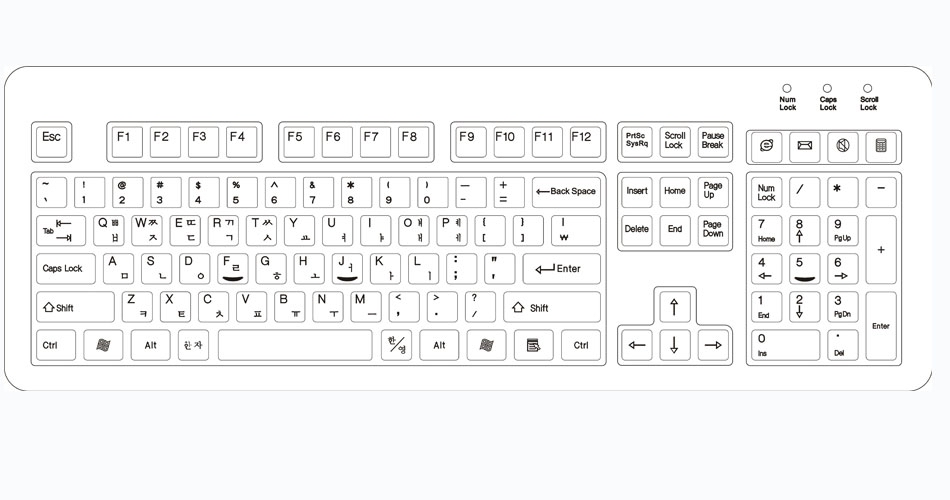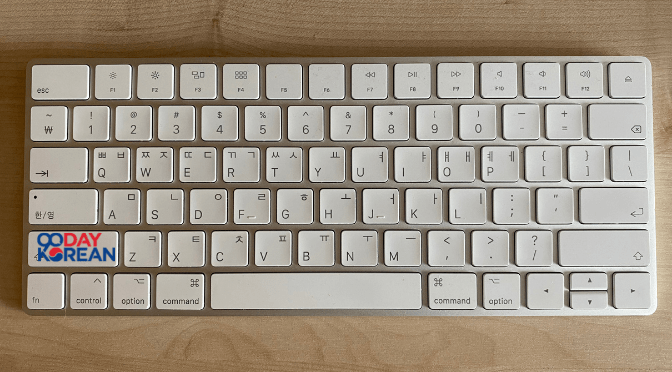

Up until the 1960s, Kong Byung-woo and Kim Dong-hoon were the experts on the mechanization of Hangul. Instead of mixing Hangul and Hanja, it became more practical to only write Hangul. Additionally, as typewriters became more and more effective, their adoption may have contributed to largely abandoning hanja (한자). Another variant was the “5-set” typewriter invented by Kim Dong-Hoon in the 1950s, which produced a more aesthetically pleasing script, but on the flip side was slower and harder to use. The ceasefire agreement of the Korean War is perhaps the most famous document typewritten with a Gong typewriter. The print was irregular, which made it look like clothes on a line, a so-called clothesline font (빨래꼴). This made typing significantly faster and increased readability, though visually it was not perfect. The keys were divided into three according to the first consonant, the vowel and the last consonant. It was also known as the Gong typewriter (공병우 타자기). The next improvement, possibly the first practical Korean typewriter, was the “3-set” typewriter created by Gong Byung-woo in 1949. Beside his involvement with the Korean typewriter, he is perhaps best known for founding the Chosun Christian College in 1915, which merged with the Hospital Chejungwon (제중원) in 1957 to form Yonsei University. Interestingly the founder of the company, John Underwood, had a strong connection to Korea through his brother Horace Underwood, who was a missionary in Korea. This typewriter was later donated to the National Hangul Museum for its opening in 2014 by Song Se-young, Song Ki-ju’s grandson. Though his company designed them, they were manufactured by the Underwood Typewriter Company. However, this machine was also impractical, as it typed vertically, but read horizontally. The second was made by Song Ki-Ju in 1933. His machine used 7 rows of 12 keys and used Chinese rather than Arabic numerals. The first two attempts tried to print vertically, and were both made by Korean-Americans. Early pioneers therefore sought to improve the typewriters and come up with a design which worked for Hangul. They had to string Hangul on a single line, which made it difficult to read. These could, however, not arrange blocks out of the jamos (자모). The earliest Hangul typewriters were therefore these alphabet typewriters where the font had been replaced with Hangul. Despite Hangul technically being an alphabet, the special arrangement of stacking consonants and vowels into syllable blocks proved to be tricky to effectively type on the machines designed for Latin-based alphabets. By the 1870s, typewriters with the still widely used QWERTY-keyboard layout were sold by Remington & Sons in the US. Throughout the 19th century, the need for effective business communication in a modern world increased. Typewriters on the other hand, had several mechanical limitations. Today, we may take it for granted that computers easily can arrange what we type on the screen instantly, as well as the ease of revising the text. However, the introduction of the typewriter posed a problem for Hangul.

Closely tied to the Chinese script until Hangul (한글) was created in 1443, brush, pencil and even printing were used for hundreds of years.
What does a korean keyboard look like how to#
If a vowel or a bottom consonant is composed of two parts, left one is written first and then right one next.ġ2 Expert Tips on How to Learn Korean Fast! It always written upper consonant, vowel, bottom consonant order. Writing and typing order of Korean characters has regular order. Another word that you may hear is ? (seongham), which is the formal word for " name" in Korean.Īlso question is, how do people type in Korean? This is used in most situations, and used with the standard version of the phrase. Subsequently, question is, what is your name in Korean? (ireum).
What does a korean keyboard look like mac#
For example, You can easily enable this layout from Control panel (for windows users) or System Preferences (for Mac users).

Green and blue keys are for consonants and bright and darker pink keys are for vowels (Type with 'Shift' key for double consonants and vowels). Similarly, it is asked, how does a Korean keyboard look like?įirst of all, this is the Korean keyboard layout.

The computer will automatically assemble them into syllabic clusters. But on a computer keyboard, you can simply type them in linear sequence. When writing Korean on paper, you need to arrange the consonants and vowels into square-shaped clusters (each square being a syllable).


 0 kommentar(er)
0 kommentar(er)
